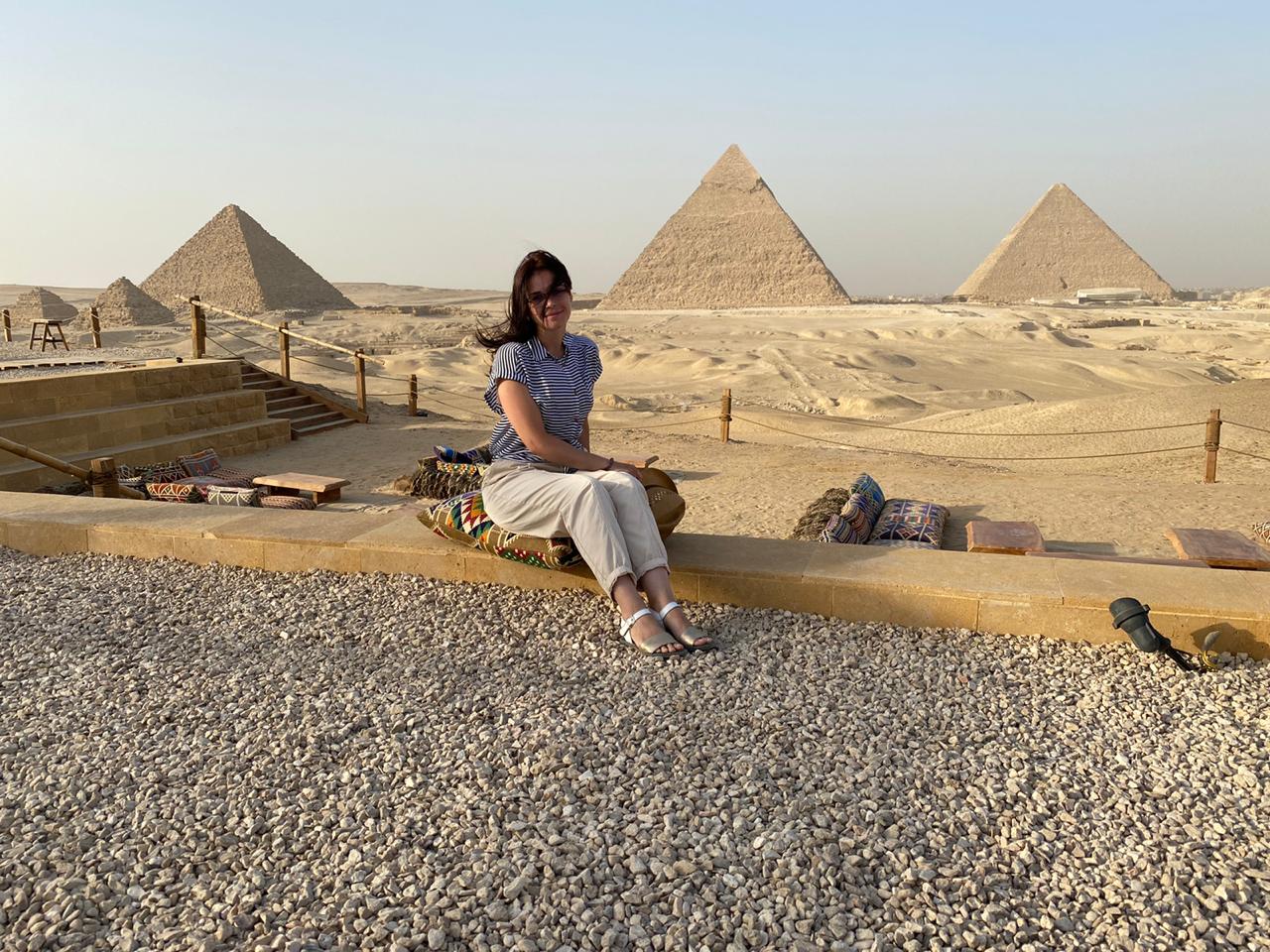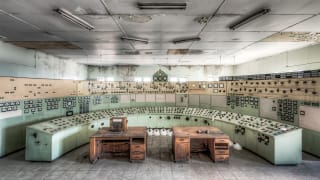Walking into the Townhouse Gallery’s factory space, one does not typically expect to see knives flying in the air, clowns doing back flips or a man rubbing his face in a pile of broken glass. But British photographer John Perkins’ exhibition, “Mister President’s Circus,” offered these surprising thrills during its opening on Sunday evening.
Occasionally, a juggler might fumble a pin or a trick might not be perfectly completed. But the crowd was sympathetic and ready to enjoy the circus close up. At the opening, one would not think that the circus in Egypt was slowly fading away.
Intimacy with the performers is part of what Perkins accomplishes with his series of documentary photographs of Egypt's National Circus. Perkins began this project in 2007, when he first moved to Cairo, and continues to photograph the circus now. There are recurring characters in his photographs, like Walid Yassin, who performs as the clown Timon, and Hammada Kouta, the circus’s former lion tamer who eventually left to work for a circus in Russia.
The photographs tell the story of a small, closely-knit group of performers, devoted to a craft that – for most – has been passed down from one generation to the next.
But the photographs do not reflect the celebratory tone of Sunday’s circus performance. Perkins’ black and white photographs are dark images set within a black border. Flashes of light illuminate a circus ring, a trapeze artist, the head of a lion, one spectator’s feet or a portrait of former President Hosni Mubarak – the circus along with the ephemera that surround it.
Perkins’ portraits reflect the sadness of their subjects. While nostalgic for the circus’s past glory, the performers dream of a better future away from Egypt. In one photograph, a man sits with the shadow of a cage casting dark lines over his face. In another, the man responsible for the circus’s drum roll is photographed with a shaft of light cast across a grave expression. The background is pitch black.
Perkins fell into this long-term documentary project on something of a whim.
"I started off photographing the circus just out of curiosity," he said. "I made friends with the people there and kept going back.”
As he followed the performers, he found their highest hope was to leave Egypt and work for a better paid, more respected circus in Russia, Turkey or China. Perkins told Al-Masry Al-Youm, “I saw the circus change only in how individual performers changed. Some leave, whereas many improve their skills by working or studying abroad on their own.”
With reduced government funding, most performers cannot support themselves solely on their circus salaries and work day jobs or in television advertising to supplement their income.
Journalist Mona Abouissa is working with Perkins on the project and wrote captions for many of his images. More than simple explanatory notes, they tell strange anecdotes along with the story of the circus across history. Visitors are likely to spend much of their time at “Mister President’s Circus” reading, which reveals Perkins and Abouissa’s true ambition for the project – to eventually publish a book.
In Abouissa’s introductory writing, she describes the circus as a decrepit bureaucracy, saying, “Its soul has become a forgotten government department.”
But she simultaneously recognizes that the circus is still something special.
“This is the one place in the government apparatus where magic happens,” she writes.
This paradox sums up Perkins’ approach to the circus as a photographer. He sees sadness and the sense of an art that is disappearing farther and farther into the past, and yet he and the people he documents clearly still carry a deep love for the circus and the strange joys it can impart.
A pair of clown shoes, some plastic rings and a few juggling pins are laid out on the floor in the middle of the gallery’s back room. They are identical to the tools the circus performers employed on the opening night. But here, in the exhibition space, amid Perkins’ melancholy photographs and Abouissa’s mournful storytelling, they become artifacts of a time past.
In conjunction with “Mister President’s Circus,” Perkins is conducting workshops on visual storytelling at Townhouse over the coming weekends. There will also be a workshop on clowning for children.
“Mister President’s Circus” is on display until 15 June at the Townhouse Gallery.
10 Nabrawy St., off Champollion Street, Downtown, Cairo
The gallery is open Saturday through Wednesday from 10-2 and 6-9 pm and on Fridays from 6-9 pm




